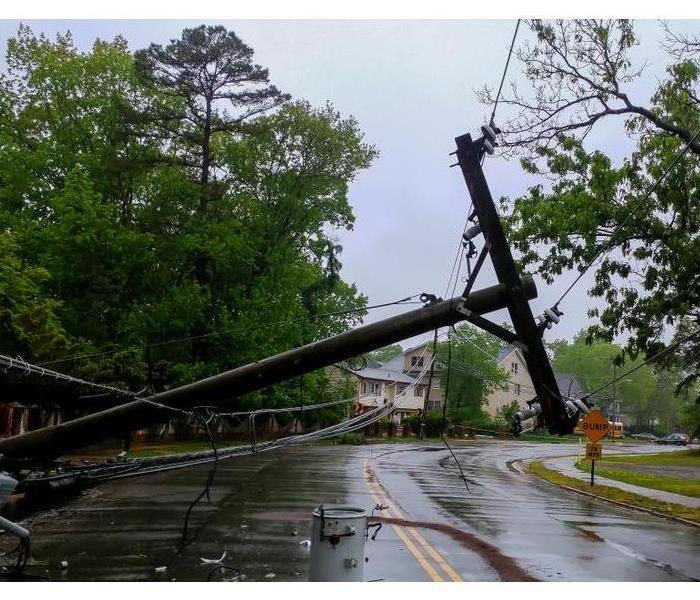How to Check for Roof Damage After a Storm
7/16/2018 (Permalink)
After a major storm, it's a good idea to inspect your property for damage. Your home's main line of defense is your roof, and it takes a beating. Since it's hard to see your roof, be sure to pay special attention to things like dings in your gutters or tears in your window screens which indicate hail damage. Even from the ground, you may see missing tiles or other signs of roof damage, but most leaks don't represent a need for whole roof replacement. Usually, the leak is coming from something requiring only minor roof repair. Find the source of the leak, stop it and clean the water damage.
Find the Leak Source
During storms in Tulsa, OK, wind damage lets the rain into your roof. From the inside of your home, look for stains that indicate the source of a leak and the area that needs roof repair. You may see water stains on your ceiling or coming down a wall. When you see that, get your flashlight and head to the attic to look for the source of the leak in that area. Here are five common sources for a roof leak:
1. Vents and fans
2. Chimneys
3. Window dormers
4. Vent pipes
5. Unsecured nails and nail holes
Fix Water Damage
To complete your roof repair, start looking for materials that have been damaged by water. Check for discolorations and rotting wood, as well as wet drywall and insulation. If you find mold, you will need to be very careful not to spread the problem during cleanup. A mold remediation professional can help by creating a containment area while working on the water and mold damage. If you haven't found mold, be sure to start drying any wet materials right away. Mold can begin growing on wet damaged materials in as little as 48 hours. Complete drying is critical to preventing mold, and it may take longer than you realize, especially in a humid attic space. Specialists have monitoring equipment that they use to ensure materials are completely dry. For more information, visit http://www.SERVPROsouthtulsacounty.com/.



 24/7 Emergency Service
24/7 Emergency Service
